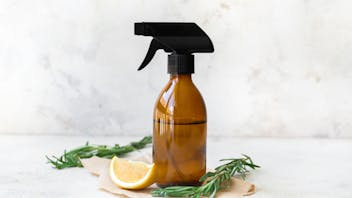Product Overview
This very fine Peppermint essential oil from plants grown in the Willamette Valley of Oregon in the United States’ Pacific Northwest is unlike our other Peppermint oils. Produced by a second-generation, family operated distillery, its aroma is of the live plant – wonderfully fresh, green, cooling and minty but with a distinctive grass-like undertone rather than the Peppermint-candy sweetness in the undertone of our organic Peppermint, France and Peppermint, India oils. The refreshing and diffusive aroma is sweet and delicious treat for the senses.
Peppermint essential oil is steam distilled from the partially dried herb, harvested in full early bloom, when menthol content is at its peak.[1] True Peppermint (Mentha x piperita) is thought to be a hybrid from three other species of Mentha – M. spicata, M. aquatic, M. longifolia and/or M. suaveolens – all native to southern Europe. The plant is cultivated in North and South America, Europe, Russia, northern Africa, India, Australia and other countries. Brought to the U.S. in the early 1800s, Oregon and Washington states are the main producers of American Peppermint oil.[2] It is stated that Peppermint oil not distilled for industrial use has less chance of being improperly distilled, or adulterated (a common practice) with other mint oils, synthetic menthol, or other constituents; those oils produced from small distilleries are closer to the aroma of the fresh plants, and their higher selling price reflects the reality of genuine and authentic production practices.[3]
Since Peppermint’s aroma strength is quite pronounced due to its menthol content, the amount used in both aromatherapy applications and natural perfumery formulas should be carefully considered. Menthol is helpful in cooling muscle and joint massage blends. Menthone, a Peppermint ketone, is the power behind this oil’s incredible diffusiveness, but please note that some safety considerations (see above) must be kept in mind.
The uplifting aroma of Peppermint essential oil is refreshing in outdoor and body sprays, diffusers, holiday blends, and a lovely companion during long car rides. For a less intense yet equally refreshing mint, please see our organic Spearmint essential oil.
1 Guenther, Ernest. The Essential Oils, Vol. III, 1949, p. 595.
2 Arctander, Steffen. Perfume and Flavor Materials of Natural Origin, 1960, pp. 513-4.
3 Ibid, p. 516.



